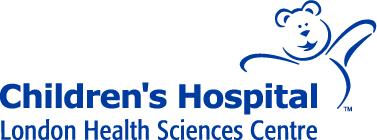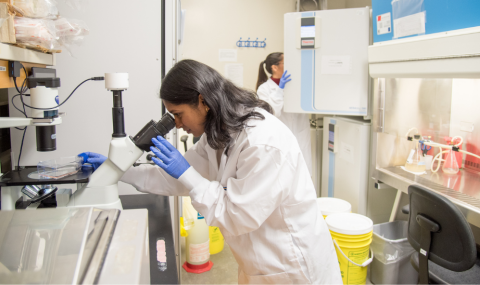The Comfort Promise is our commitment to ensuring every child receives the highest level of comfort and pain management during their care.
We aim to minimize the pain and anxiety associated with needle procedures through the use of various evidence-based strategies geared towards each child. These strategies include topical anesthetic, comfort positioning, distraction and sucrose and/or breastfeeding.
Why is the Comfort Promise important?
Paediatric pain has traditionally been underrecognized and undertreated.
More than 75 per cent of children experience pain while in the hospital. In fact, needle procedures are reported by children as the most painful, second only to their medical condition.
Untreated pain from needle procedures can lead to long-term issues such as avoiding health care, increased pain sensitivity in future procedures, and slower recovery. Fear of needle-related pain also contributes to vaccine hesitancy.
The Comfort Promise is important because it:
- Improves the overall patient experience by reducing pain and distress;
- Leads to better health outcomes through less traumatic medical care;
- Supports families by providing a more positive medical experience; and
- Reflects our dedication to compassionate, patient-centered care.
What are the comfort strategies and how do they work?
Topical anesthetic (all ages)
A topical anesthetic can be applied to a patient’s skin to numb it before a needle procedure. The anesthetic is usually applied as a cream or gel and quickly takes effect.
Comfort positioning (all ages)
Comfort positioning allows patients to be positioned in a supportive and secure way during needle procedures. This includes sitting upright and focusing on secure, hugging positions rather than restraint, which has been linked to significant negative effects.
Distraction (all ages)
Distraction is a simple yet effective strategy to draw the patient’s attention away from the needle procedure. This can be accomplished through age-appropriate activities such as watching a video or playing with a toy.
Sucrose and/or breastfeeding (under 12 months of age)
Sucrose and breastfeeding are both effective methods for reducing needle pain in infants. To maximize their benefits, administration should begin two minutes before the procedure and continue throughout. Sucrose can help reduce the duration of crying in infants under 12 months old. When possible, combining breastfeeding or sucrose administration with skin-to-skin contact and sucking can further enhance comfort and pain relief.
What should patients and families expect?
At every opportunity, we will offer your child age-appropriate strategies to prevent and treat pain associated with their needle procedure. We also encourage you to feel empowered to ask about and actively participate in the Comfort Promise.



